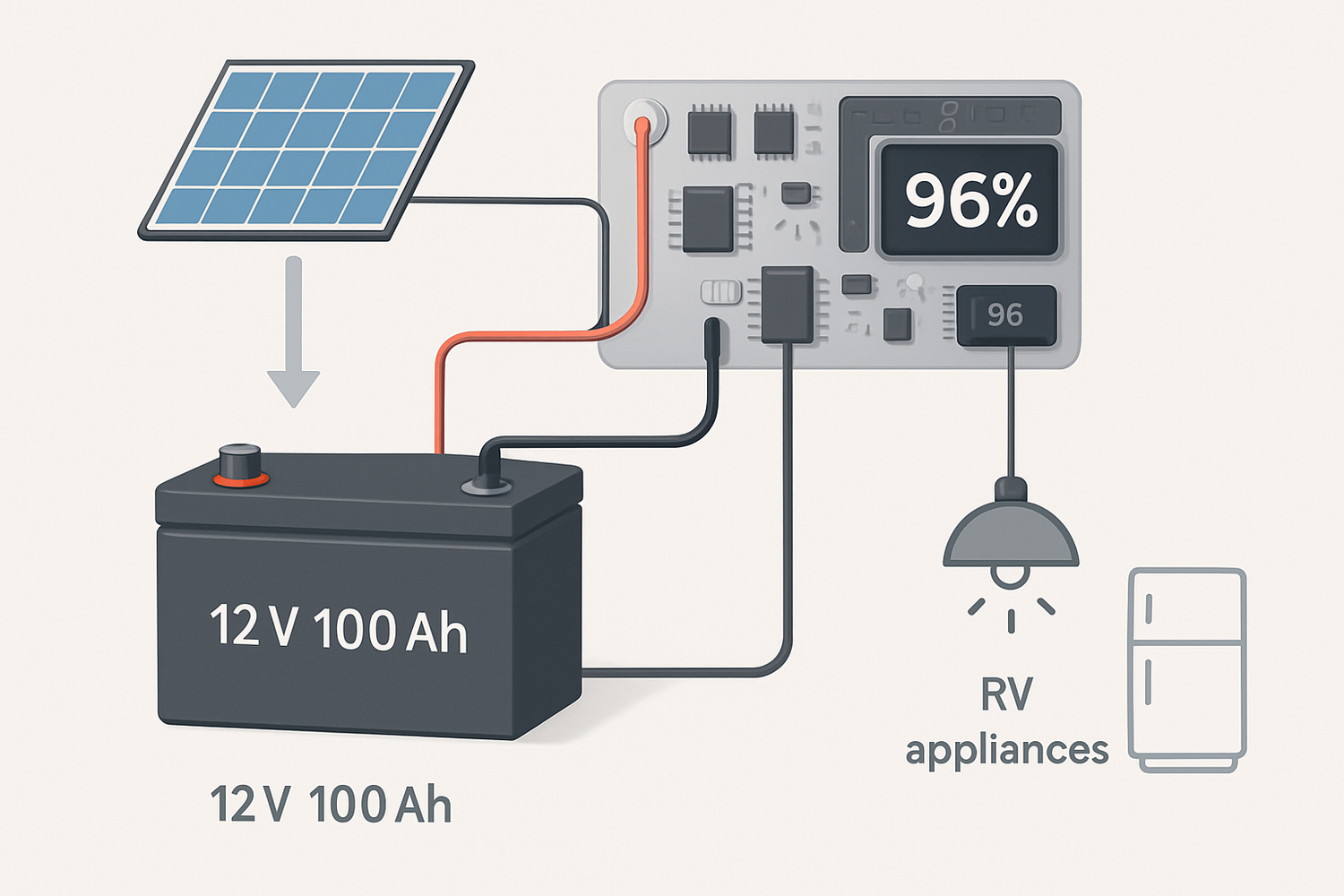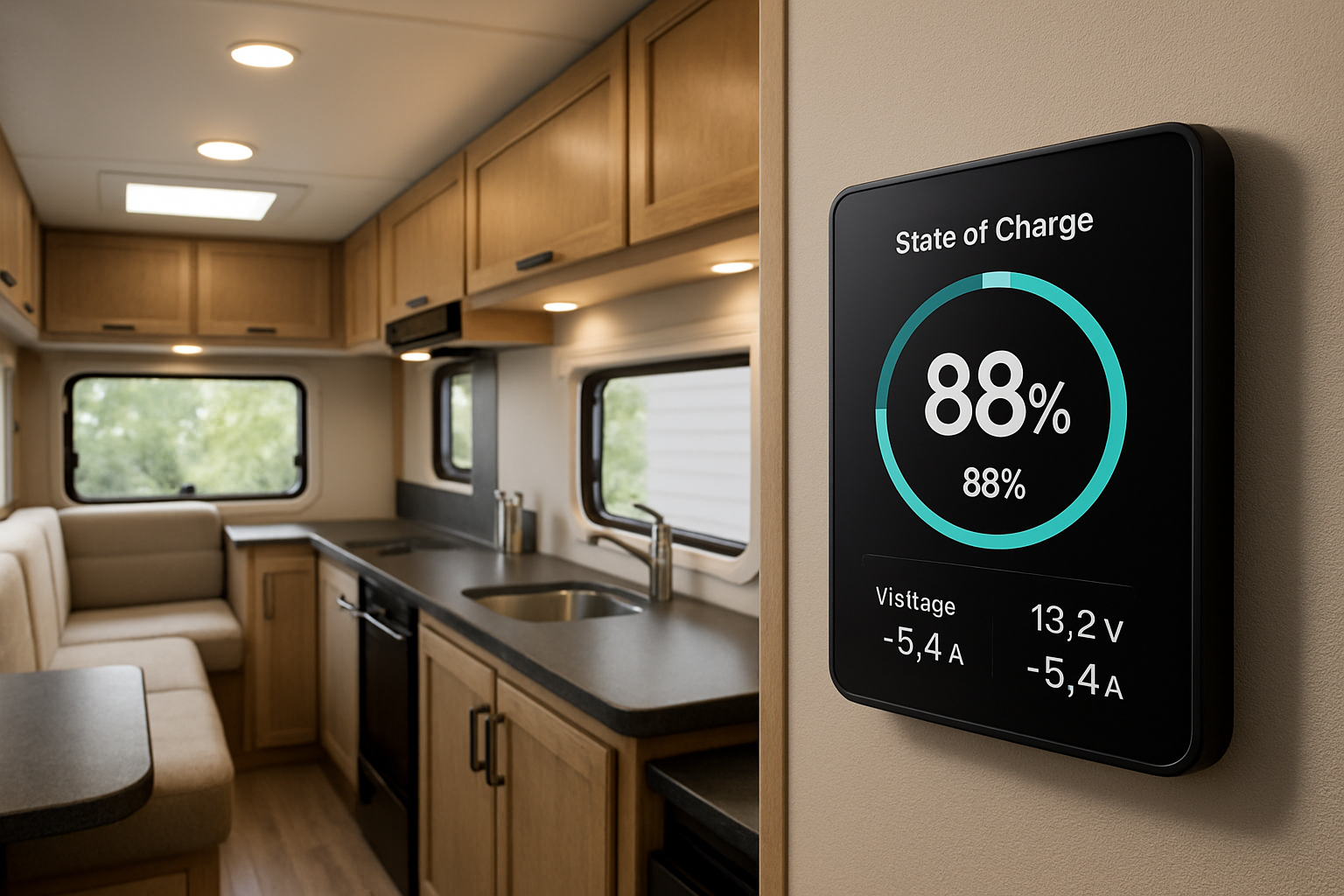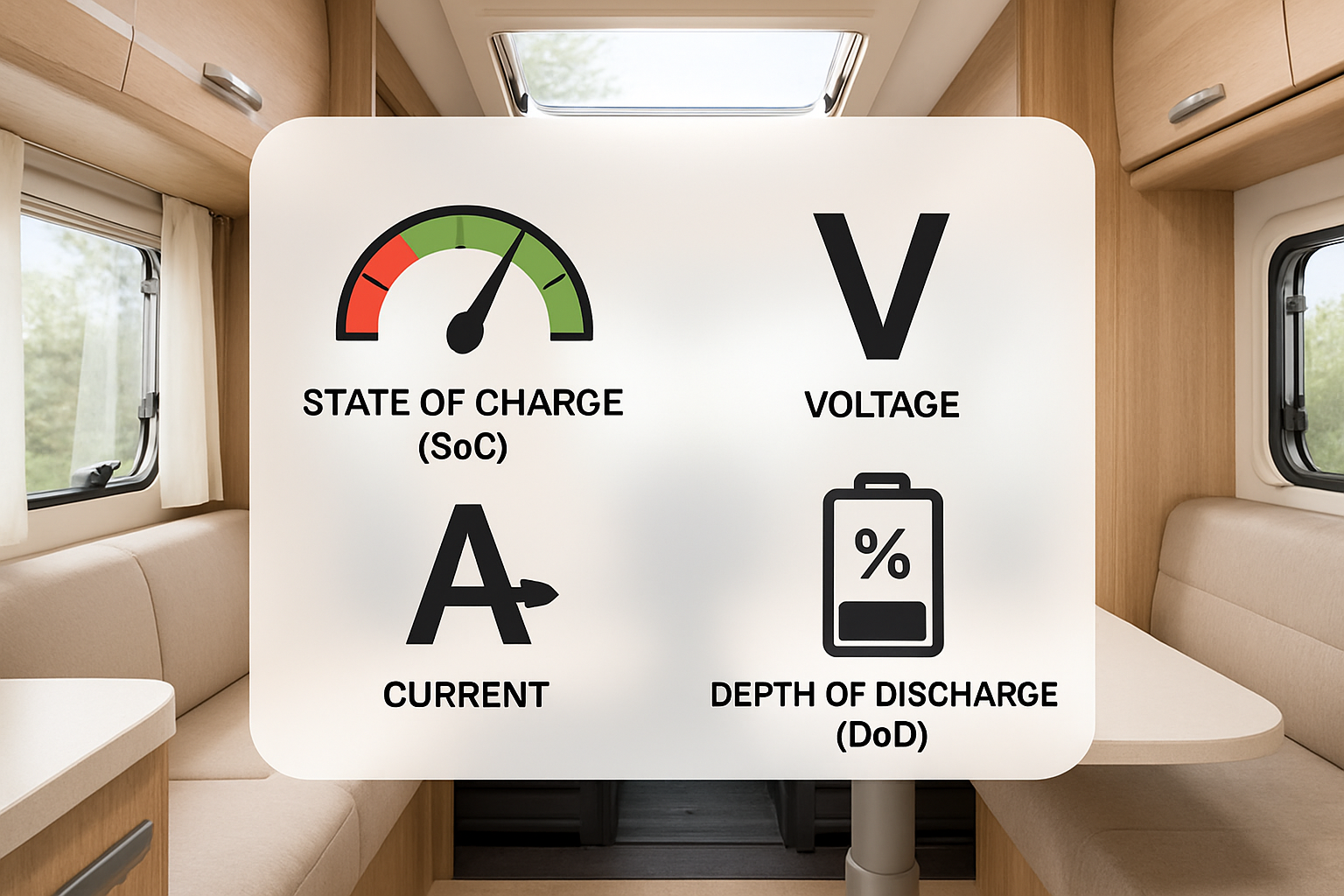Managing the power in your RV is fundamental to a great off-grid experience. You rely on your 12V 100Ah lithium battery to run everything from lights to refrigerators. But how much energy do you actually have left? Many people glance at a voltage meter, but for a lithium iron phosphate battery, that number can be deceptive. This reading often fails to provide a true picture of your remaining power. Understanding your battery’s State of Charge (SoC) is the key to effective RV energy management and unlocking true energy independence.
The Limits of Voltage-Based Monitoring
Relying on voltage to gauge the capacity of a 12V 100Ah LiFePO4 battery is a common mistake. The chemical properties of these advanced batteries make voltage an unstable indicator for several reasons.
The Flat Discharge Curve of LiFePO4
Lithium iron phosphate (LiFePO4) batteries are known for their incredibly flat discharge curve. This means they maintain a nearly constant voltage from a 90% charge all the way down to around 20%. Unlike traditional lead-acid batteries, where voltage drops predictably as energy is used, a LiFePO4 battery's voltage will barely change for most of the discharge cycle. This stability is great for powering appliances but makes it nearly impossible to determine the remaining capacity by simply looking at the voltage.
How Load and Temperature Skew Readings
Voltage is not a static number; it fluctuates based on immediate conditions. When you turn on a high-power appliance like a microwave, the immediate demand for current will cause the battery's voltage to dip temporarily. This is known as 'voltage sag'. Conversely, when the load is removed, the voltage will recover. Temperature also plays a role. In cold weather, a battery's voltage will be slightly lower, while in hot weather, it might be higher. These fluctuations can lead you to believe you have less or more power than you actually do.
Voltage vs. SoC: A Clear Comparison
The difference between LiFePO4 and lead-acid batteries becomes clear when you compare their voltage-to-SoC relationship. This table illustrates why voltage is a poor indicator for modern lithium batteries.
| State of Charge (SoC) | 12V LiFePO4 Battery Voltage (Approx.) | 12V Lead-Acid Battery Voltage (Approx.) |
|---|---|---|
| 100% | 13.4V | 12.7V |
| 80% | 13.2V | 12.5V |
| 50% | 13.1V | 12.2V |
| 20% | 12.9V | 11.8V |
| 0% | 10.0V | 10.5V |
As the table shows, the LiFePO4 battery's voltage barely moves between 80% and 20% SoC, while the lead-acid battery shows a much more linear, predictable drop.
The Role of the Battery Management System (BMS)
At the heart of every 12V 100Ah lithium battery is a sophisticated electronic circuit called the Battery Management System, or BMS. This is the brain that ensures safety, efficiency, and longevity.
Core Functions of a BMS
A BMS is primarily a safety device. It protects the sensitive lithium cells from damaging conditions, including over-charging, over-discharging, excessive current, and extreme temperatures. It also performs cell balancing, ensuring all the individual cells within the battery pack are at an equal state of charge, which maximizes both performance and lifespan.
How a BMS Enables True SoC Calculation
Beyond protection, an advanced BMS is crucial for accurate SoC monitoring. It uses a technique called coulomb counting (or current integration). The BMS continuously measures the current flowing into the battery during charging and out of the battery during discharging. By tracking this flow of energy over time, it can calculate a highly accurate percentage of the energy remaining. This is far more reliable than any estimation based on voltage alone.
Tools for Precise RV Energy Management
To access the accurate data from your battery's BMS and gain full control over your RV's power system, you need the right tools. A dedicated battery monitor is the most effective solution.
The Accuracy of a Shunt-Based Battery Monitor
A shunt-based battery monitor is a device that provides a precise, real-time view of your energy status. It uses a device called a shunt, which is installed on the main negative battery cable. This shunt measures every amp of current that enters or leaves your 12V 100Ah lithium battery. The monitor then uses this data to display critical information, including a true SoC percentage, current power consumption in watts, and amp-hours remaining. This eliminates all the guesswork associated with voltage readings.
Making Data-Driven Energy Decisions
With an accurate SoC, you can transform how you manage energy. You will know exactly how much power your coffee maker uses versus your laptop charger. This allows you to build a reliable energy budget, making confident decisions about when to conserve power and when you can use it freely. This level of insight is essential for planning extended off-grid stays and ensuring you always have enough power for your needs. The principle of precise energy management is critical in large-scale applications as well. As noted in the International Energy Agency's Status of Power System Transformation 2019 report, large battery installations like the Hornsdale Power Reserve rely on meticulous monitoring to provide grid stability services.
Protecting Your Investment and Gaining Confidence
An accurate understanding of your battery's SoC is not just about convenience; it's about protecting your investment and maximizing its lifespan.
Extending Battery Lifespan
While LiFePO4 batteries are resilient and can handle deep discharging, consistently running them completely empty can still affect their long-term health. A true SoC monitor helps you avoid unintentional deep discharges. By keeping the battery within its ideal operating range, you can significantly extend its service life. Understanding the factors that influence battery health is crucial, and a detailed reference on solar storage performance can provide deeper insights into maximizing the longevity of your energy system.
The Confidence to Go Further
Ultimately, true SoC monitoring provides peace of mind. Knowing you have exactly 55% of your power remaining is far more actionable than seeing a vague voltage reading of 13.1V. This confidence allows you to fully enjoy your adventures without the constant worry of running out of power. The global push toward renewables and battery storage, highlighted in the IEA's World Energy Investment 2023 report, is what drives the innovation making this technology accessible for applications like RVs, enabling greater energy independence for everyone.
A Clear View of Your Power
For any serious RV owner, moving beyond simple voltage checks is a necessary step. The flat discharge curve of a 12V 100Ah lithium battery makes voltage an unreliable guess at best. By embracing the technology within your battery's BMS and utilizing a shunt-based monitor, you gain a clear, accurate, and real-time understanding of your energy reserves. This true State of Charge reading empowers you to manage your power effectively, protect your equipment, and explore with confidence.
Frequently Asked Questions
Why does my 12V 100Ah lithium battery's voltage stay so high even when it's not full?
This is due to the flat discharge curve of LiFePO4 chemistry. The battery maintains a very stable voltage—typically between 13.1V and 13.2V—for the majority of its discharge cycle (from about 80% down to 20%). The voltage only drops significantly when the battery is nearly empty.
Can I rely solely on my solar charge controller's SoC reading?
Some solar charge controllers estimate SoC based on voltage, which can be inaccurate for lithium batteries. While better than nothing, they are not as precise as a dedicated, shunt-based battery monitor that measures the actual current flowing in and out of the battery.
What is Depth of Discharge (DoD) and how does it relate to SoC?
Depth of Discharge (DoD) is the percentage of the battery's capacity that has been used. It is the inverse of SoC. For example, if a battery has a 70% SoC, its DoD is 30%. According to the International Renewable Energy Agency's Innovation Outlook: Smart charging for electric vehicles, LiFePO4 batteries are valued for their ability to handle a high depth of discharge, meaning you can safely use a larger portion of their stored energy.
How does temperature affect my SoC reading?
Temperature primarily affects a battery's voltage and performance. Extreme cold can cause voltage to sag, while high heat can do the opposite. A voltage-based estimate would be inaccurate in these conditions. However, a coulomb-counting monitor is much more resilient to these changes because it tracks the actual energy used, not the fluctuating voltage.





Leave a comment
All comments are moderated before being published.
This site is protected by hCaptcha and the hCaptcha Privacy Policy and Terms of Service apply.